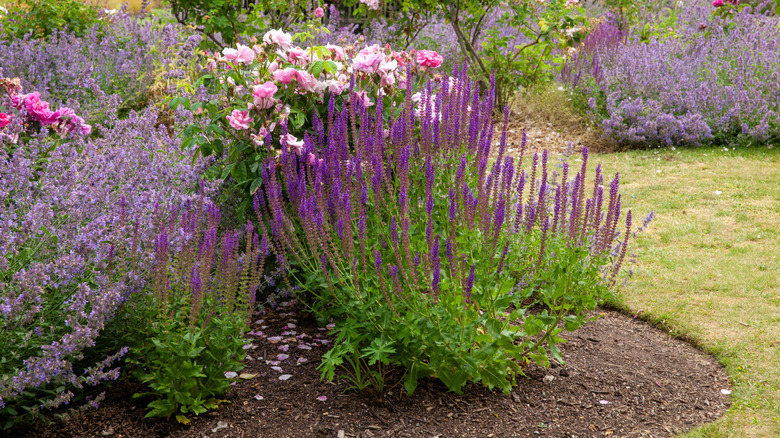The Easiest And Most Affordable Way To Make A Perennial Border In Your Garden
Filling your perennial borders with an abundance of plants can be an expensive and time-consuming process. Using your existing plants for propagation is an inexpensive way to create more plants, but some might find it's still time-consuming. You can divide established perennials, but if you're dealing with a new garden, your plants may not be ready for this step. There's quite a bit you need to know about dividing perennials, and unless you have a greenhouse or other space where you can grow plants from seed or cuttings, you may find this option less than optimal. However, there's a lesser-known free and easy way to fill your garden borders: Deadhead your plants as they are ready to go to seed, and then insert the stems in the bare patches of garden where you would like to see them grow.
Sounds too good to be true, right? Well, the truth is, this is just a more directed version of letting your plants self-seed. Gardeners know that if you let your plants go to seed, there's a good chance they will spread. This method is the same, you're just moving the seeds to where you want them to end up. And you don't have to stick to just the plants in your yard. If you have a friend or neighbor with plants you admire, ask if you can snip their plants as well.
What to know when using this propagation method
While this method will likely work with most plants, you may need to be prepared for unpredictable results. Self-seeding is always a bit of a guessing game. You may get 10 new plants or you may get none if you let the process run its course naturally. Still, there are some things you can do to ensure some level of success. Choosing effortlessly self-seeding flower varieties is a good start. If a plant has a reputation for being aggressively self-seeding, it is likely you can expect to see new plants sprout.
Getting your timing right is also important. You will want to wait until a stem's flowers grow ripe with seeds and turn brown. If you're just starting your seed-saving journey, you will know this is also the best time to collect seeds. In this case, however, you'll snip an entire stem and carefully move it to the area where you want to see the plant grow. Eventually, the seeds will fall and, hopefully, sprout. Even if the plants don't grow exactly where you expected them to, you can wait until they are big enough and transplant them to your ideal location.
It's also important to note that plants grown from seed do not always look like the parent. So, you may end up with a few surprises in next year's garden. That's part of the fun of gardening, though!
